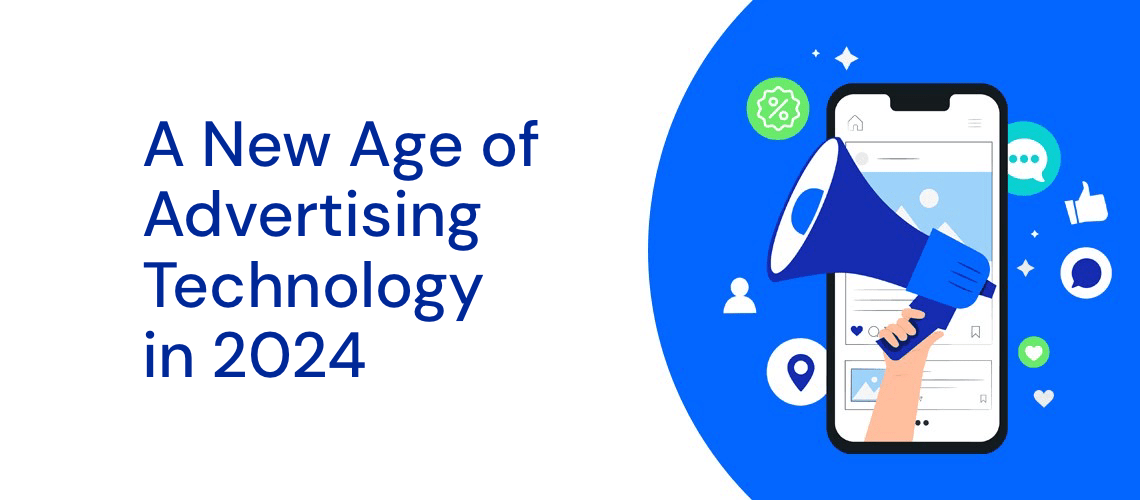It’s indicative of the turbulence of adtech and digital media that predictions for 2024 by industry players have come thick and fast in the last month of the year.
The competitive climate has intensified in the last quarter of 2023, characterized by concerns over weakened ad spending in many corners of the global economy, digital eating traditional media for ad spend share, the unrelenting dominance by the MAMAA collective (Microsoft, Amazon, Meta, Apple, Alphabet), and the rolling thunder of Generative AI.
There are even more unknowns in the mix. The rise of privacy legislation, the imminent demise of Google’s Chrome third-party cookie, global economic uncertainty, political strife, and the prospect of another divisive US presidential election has left brands nervous about where to allocate their media and marketing budgets. Meanwhile the big retailers are only just starting to hit their media stride.
As Publicis Media describes it: “The proliferation of platforms has kept content demand at an all-time high, which has also created enormous stress on brands looking to connect in new and different ways. The so-called ‘funnel’ has collapsed – in its place are seamless content-to-commerce experiences, and consumers, who are more discerning than ever, have embraced ad-free environments and are shaping the media and entertainment landscape through their preferences for streaming and on-demand content, in addition to their lack of commitment to any one channel or platform.”
Hence, 2024 is shaping up to be a year of big winners… and unfortunate losers. Picking the right media channels, customer acquisition strategy, and technology partners will be critical. In that light, we have selected a number of the most intriguing predictions for next year.
The US economy will remain resilient

The gigantic US ad market may appear to be the strongest of them all. Madison and Wall analyst Brian Wieser is now anticipating 5.9% underlying growth for the US ad market in 2023 versus 5% previously. The former GroupM intelligence chief’s recent upgrade presents some cause for optimism. He believes that 2024 now looks stronger as well, with the total market expected to grow 5.2%. “For all of next year I forecast that there will be $397 billion in ad revenue for media owners in the United States, including $17 billion of political advertising.” Wieser has previously been scathing of those that have talked up a down turn. His advice? “Question everything.”
Either way, the US media and ad market will continue to influence the rest of the world, not least in the video market. A key battleground will be the digital video streaming market, which continues to chip away at the US$65 billion linear television ad business. Amazon could make a big dent by the back end of the year and the reality is that all streamers are now seriously developing ad businesses.
Antitrust court action will take center stage
All eyes will be on Google’s legal fights with the US Department of Justice over claims of monopolistic behavior in its search advertising business. A second DOJ action, alleging antitrust violations in its gigantic advertising technology operations, commences in January. The US regulatory body will be heartened by the recent result in the app store space – in the last month of 2023, Google’s $48 billion app store monopoly was severely challenged after losing a major court battle to Fortnite maker Epic Games over its Google Play store practices.
If the ruling stands, Google could lose a sizable chunk of revenue. Wells Fargo analysts estimate US$10 billion in annual revenue from app sales and in-app purchases for the tech giant is up for grabs if Google is required to let other app stores onto its Play platform. Google will challenge the ruling in court and any meaningful impact may take years to take effect, but the late 2020’s will be defined by complex antitrust drama.
The big three will overshadow independents once again
Advertising’s Big Three – Google, Meta and Amazon – will continue to squeeze independents, worsening their competitive situation, says Karsten Weide, Chief Analyst, W Media Research.
“Regarding advertising spending, the good news is that the triopoly doesn’t seem to grow its 80 percent-plus share anymore, meaning that smaller publishers can scrape out a living,” Weide suggested. “The bad news is that in absolute terms, while the Big Three grow by billions, the small guys only grow by millions. This makes their situation even more dire, even without losing market share. Google can afford to research artificial intelligence; The New York Times – not so much.”
So what can publishers and adtech vendors do to challenge the big platform dominance? Weide recommends they should branch out from desktop-based display advertising into Retail media, CTV and mobile advertising, focus on making available and using first-party data for better targeting. He adds independent players should deploy customer data platforms (CDPs) and data clean rooms (DCRs), and prepare for the non-cookie world by implementing new technologies, such as cohort targeting, universal IDs and contextual targeting.
AdTech M&A will happen, but easy exits will be rare
Will there be another uptick in media and adtech acquisitions in 2024? The year finished with Perion buying HiveStack for $100 million, perhaps a sign that mid-tier acquisitions for scale will remain a trend. However, Dave Morgan, CEO of US-based Simulmedia, believes that adtech buyers are few in number, while there are numerous sellers. Which could see some bargain M&A in 2024, given predictions of consolidation.
“Cheap money, high public market valuations and unending capacity to keep paying more for talent have already become yesterday’s memories,” wrote ad industry veteran Morgan. “Increasingly, investors today want profitability, free cash flow, and no debt service; not just revenue growth, and certainly not just ARR (annualized recurring revenue) growth.”
Morgan noted that there are many hundreds of ad tech companies currently losing money or barely breaking even, living day-to-day on transaction arbitrage. “Operating that way could work when venture capital was plentiful and working capital debt was plentiful, cheap and forgiving,” said Morgan. “Those days are over.”
AI-powered mobile apps, gamind spend, and video to rise

Mobile data and analytics provider data.ai believes generative AI is set to play a big role in our mobile user experience in 2024, with downloads of apps that contain Generative AI functionality – whether directly Generative AI apps or apps embedding AI into their value proposition – will grow by 40% year-over-year.
The firm also predicts that micro-blogging apps will face a further decline, because consumers are swapping out text-based social networking apps for photo and video-first platforms. If that trend continues, it’s hard to argue against those that say video-first will become king.
Meanwhile, gaming will experience a big rebound in 2024, per data.ai, with consumer spending on games around the world to rise 4% to $111.4 billion. The company estimates the US is set to be the largest driver of spending growth in 2024, accounting for 40% of aggregate YoY spend, followed by Japan, South Korea, Taiwan, Germany and the UK. Japan is set to contribute 16% of total growth in YoY spending.
The company also points to a general shift of where news content is being absorbed, noting that 43% of US TikTok users report they get their news on the platform, double from three years prior.
Generative AI (and retail media) will upend advertising
New ways of delivering ads; New ways of running ad tech operations and creating digital ad content; Machine learning underpinning the automation and optimization process in the adtech stack; The constant tension between real and fake media. AI will bring it all in 2024 and it won’t be an easy maze to navigate.
But there are bots that can help… and the advent of AI personal assistants will have deep implications for how consumers interact with content, apps, and digital platforms.
“By the end of 2024 many of us will have an AI-enabled assistant,” predicts Judy Nayler, from Australia’s National AI Centre. “This will be either personalized to our individual needs or leveraging the increasingly ‘intelligent’ embedded assistants in the products and services we use every day.” AI search engines and platforms, and TikTok, will likely challenge Google’s 25-year dominance of search, and a new era of answer engine optimization will take its place in the consumer landscape.
The emergence of LLM’s (large language models) will upend the way consumers search for information, and create a new interaction paradigm. Google’s Gemini and Amazon’s Q will aim to challenge the astonishing rise of Open AI’s ChatGPT. The recent passage of the EU AI Act has brought concerns over un-regulated behavior sharply into focus – and there is undoubtedly seismic change coming to content creation, advertising and the entire media landscape.
Not to mention cookie deprecation. But that actually now seems pretty easy. Retailers that have properly set up media businesses and data are set for major gains next year. Consumers like retail media because they are in the mood to transact and engage in digital commerce on those platforms, compared to the interruptive nature of content-adjacent advertising. If Google does finally kill cookies, it’s a pretty safe bet that 2024, 2025 and beyond will be the years retail media genuinely takes off – and the fight for loyalty scheme acquisition becomes increasingly cutthroat. That could also bring regulators into play. Hang on for a wild 2024.


